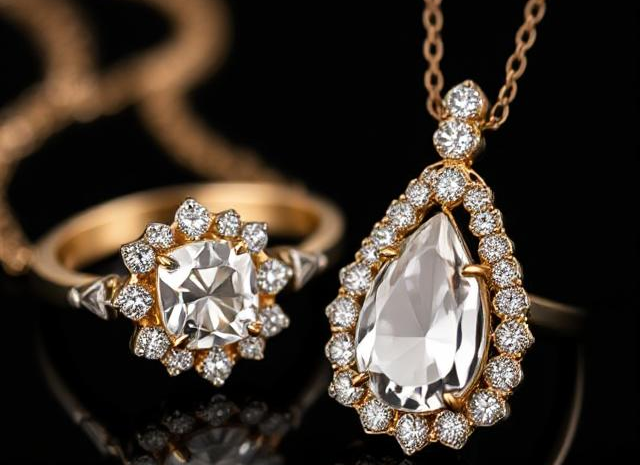
How To Insure Expensive Jewelry And Valuables Under Personal Insurance
Insuring expensive jewelry and valuables is an essential part of protecting your assets, especially if you have items that are not fully covered under a standard homeowners or renters insurance policy. These high-value items can be vulnerable to theft, loss, or damage, so it’s important to ensure they are adequately insured. Here’s how to insure expensive jewelry and valuables under personal insurance:
1. Check Your Current Homeowners or Renters Insurance
Most homeowners or renters insurance policies cover personal belongings, including jewelry, but there are usually limits on how much coverage is provided. Typically, standard policies will offer a base coverage limit for personal property (e.g., $1,000 to $2,000 for jewelry), which may not be sufficient for high-value items like engagement rings, watches, or other expensive pieces.
What to check:
- Coverage limit: Review your policy to determine the maximum coverage for jewelry and valuables. If it’s below the value of your items, you may need to increase your coverage or add a rider.
- Exclusions: Check for any exclusions related to jewelry or valuable items, such as limitations on theft (i.e., if stolen from your car) or damage (e.g., items being damaged while traveling).
2. Add a Jewelry Rider or Endorsement
If your jewelry and valuables exceed the limit provided by your homeowners or renters insurance, you can typically purchase a rider (also called an endorsement) to increase coverage for specific items.
How it works:
- Rider Coverage: A rider is an add-on to your existing policy that provides extra coverage for valuable items like jewelry, art, antiques, or collectibles. Riders often have higher coverage limits and fewer restrictions.
- Scheduled Coverage: This involves listing each valuable item individually on the policy, specifying the exact value, and paying an additional premium based on that value. This ensures that your items are specifically covered in case of loss or damage.
Benefits of Adding a Rider:
- No Deductible: Most riders do not require a deductible, meaning if your item is lost or damaged, you can file a claim for the full value.
- Worldwide Coverage: Riders often provide global coverage, meaning your jewelry will be covered even if it’s lost or stolen while traveling.
- Special Coverage for Certain Risks: Some riders include coverage for specific risks like accidental damage (e.g., dropping a ring), which is often not included in standard policies.
3. Appraise Your Jewelry
To ensure that your jewelry is adequately insured, you’ll need to appraise the items to determine their current value. An appraisal will give you a precise figure, which will be used to set your insurance coverage.
Steps to Appraise Your Jewelry:
- Professional Appraisal: Have a certified gemologist or jewelry appraiser evaluate your jewelry. The appraiser will examine factors such as materials (gold, diamonds, etc.), craftsmanship, and market value.
- Get an Updated Appraisal: Jewelry can fluctuate in value over time, so it’s essential to have your items reappraised periodically to ensure they are covered for their current value.
4. Consider a Standalone Jewelry Insurance Policy
If you don’t want to rely on a rider or endorsement, you can opt for a standalone jewelry insurance policy. These policies are specifically designed for insuring jewelry and may offer more extensive coverage than a general homeowners policy.
Benefits of a Standalone Jewelry Insurance Policy:
- Specialized Coverage: Jewelry insurance often includes coverage for more specific scenarios, such as accidental loss, mysterious disappearance, or damage from normal wear and tear.
- Worldwide Coverage: Many jewelry insurance policies provide coverage regardless of where the jewelry is located, whether at home, in transit, or while traveling.
- Fewer Exclusions: Standalone policies often have fewer exclusions for jewelry than standard homeowners or renters policies.
5. Keep Documentation and Records
Proper documentation can be crucial when filing a claim, so it’s important to maintain a record of your valuable items.
What to keep:
- Appraisals: Keep a copy of the official appraisal for each piece of jewelry, detailing the item’s value, description, and photographs.
- Receipts: Retain purchase receipts or invoices for your jewelry, especially for new pieces.
- Photographs and Descriptions: Take clear photos of your jewelry from different angles, and make a detailed description of each piece. This helps prove ownership and makes claims processing smoother.
- Insurance Policy: Ensure that your policy includes the correct value of your jewelry and check periodically to update coverage as the value of your items increases.
6. Review Your Coverage Regularly
As your jewelry collection changes over time (e.g., if you acquire new items, or the value of existing items increases), you should review and update your insurance. Many insurers allow you to adjust your coverage or add additional items as needed.
Things to consider:
- Increasing Value: If your jewelry appreciates in value (e.g., due to market fluctuations), you may need to adjust the coverage to reflect this.
- Additional Purchases: If you purchase more expensive jewelry, be sure to have it appraised and added to your policy promptly.
- Annual Policy Review: Review your entire insurance policy each year to ensure all your valuable items are adequately covered, and you’re not overpaying for unnecessary coverage.
7. Check for Discounts
Some insurance providers offer discounts for insuring multiple items or bundling your jewelry coverage with other types of insurance, such as your homeowners or auto insurance. Check with your insurer to see if these discounts are available.
Summary of Key Steps:
- Check your homeowners or renters policy for existing coverage and limits on jewelry.
- Add a rider or endorsement to increase coverage if necessary.
- Get a professional appraisal for each piece to determine its current value.
- Consider standalone jewelry insurance for more specialized coverage.
- Keep detailed records (appraisals, receipts, photos) of your jewelry.
- Review and update your coverage regularly, especially after purchasing new items or if the value increases.
- Ask about discounts for bundling jewelry insurance with other policies.

